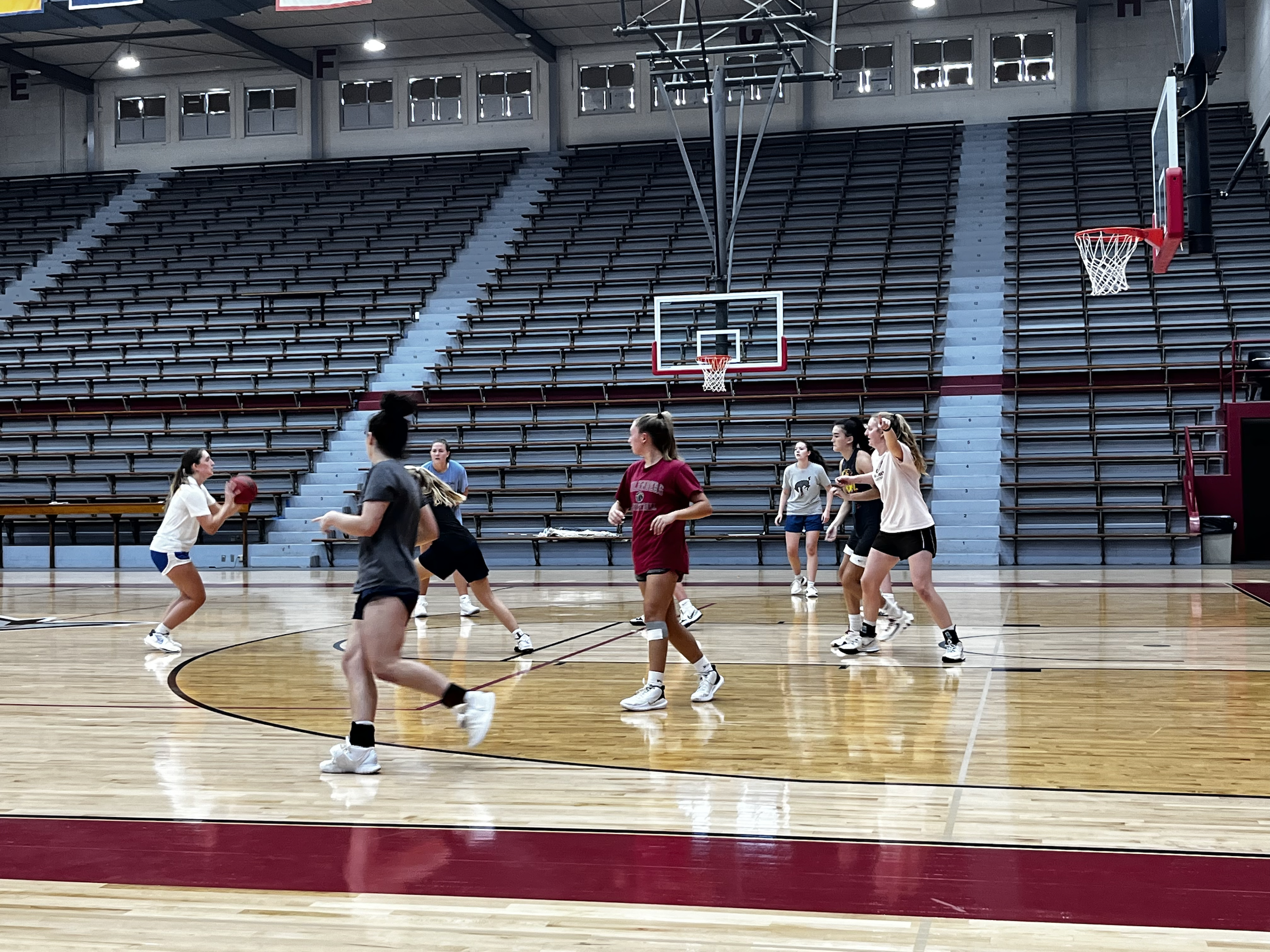
A non-traditional season for an NCAA Division III athletic team is five weeks long; 15 practices and one day of competition. Combine that with the three-to-four-month official season and teams are left with at least seven months of the offseason during which they are not training or playing together. Can teams that only get to play together, under NCAA rules, for a maximum of five months out of the year reach their full potential on the field or court?
According to a recent email from Megan Patruno, associate athletic director at Muhlenberg, “Division III student-athletes should be instructed that captain’s practices outside the declared playing season or on a required day off are impermissible.”
“This rule is really meant to protect the student-athletes,” said Patruno. “Health and safety is a top priority. Muhlenberg student-athletes are competitive and are always looking for ways to improve their skills, and I believe this rule is in place to cushion them from overworking.”
Although the rule may center around preventing mental and physical burnout, it takes a certain passion for the game to reach the collegiate level. For some student-athletes, their focus lies heavily on their sport.
“We should be able to hold captain’s practices,” said Ethan Beyer ‘25, a member of the Muhlenberg men’s soccer team. “They are great opportunities to bond with each other, work on our game and just get to know each other better… going to soccer practices and playing games is something we hold dear in our lives, and we want to play as much as we can.”
“One month really isn’t enough,” adds Rachel Saxton ’25, a guard for the Muhlenberg women’s basketball team. “I think we need more structure when it comes to actually playing because it’s not enough to play for a month and then jump into our season just like that.”
Part of the advertised benefit of Division III athletics is the freedom and ability to pursue loads of extracurricular and academic interests while being an athlete, something this rule promotes. By regulating off-season captain’s practices for DIII teams, the NCAA is eliminating the weight on student-athletes to attend workouts outside of their playing season, allowing them to attend job interviews or present research without missing practice or matches.
“It’s nice that the rule makes things really clear cut,” said Professor of Mathematics Elyn Rykken. “It takes the choice and pressure off of the student-athlete and says look, you gave your all when you were in season, and now you can take a role in a play or pursue an internship… it allows you to be a more well-rounded participant in the Muhlenberg community.”
“Time off can be a good thing,” commented first baseman of Muhlenberg’s 2022 conference champion softball team, Kaitlyn Buurman ‘25. “Division III allows student-athletes to recognize that they can focus on their schoolwork or clubs frequently, for example. Putting the time and effort into your sport is going to make all the difference, yes, but the privilege of having the ability to focus on other aspects of your life is important.”
Some important aspects of a student-athlete’s life consist of academics and their physical well-being.
“I think the rule makes sense within the framework of the Division III philosophy of balancing academics with athletics,” said athletic trainer Sean Morse. “From an athletic training perspective, it also helps to reduce the likelihood of injuries–either during the season or when sports are out of season.”
Aside from performance and skill, another crucial part of team success is chemistry and how well a team meshes on the field or court. If teams are only together for one-third of the year, they have minimal time to gel with the teammates they go to battle with every game.
“On the court, [the rule] definitely affects team chemistry,” said Saxton. “We need more time because it’s not enough just to go on the court three times a week for one month and play with each other. I believe that you have to do more of not just play, but you have to actually learn everyone’s strengths and weaknesses and build upon those.”
This rule can be viewed from many different lenses, for better or worse, but regardless of which lens you use, it is a challenge teams work to overcome every season. “I think we definitely can overcome the challenges,” explained Saxton. “As a team, we have to say, ‘Hey, listen, if we want to be successful, and if we want to win a championship, we can’t just come in every day and go through the motions.’ Whether it’s playing pick-up for an hour or getting a lift in late at night, we have to take advantage of every opportunity we have as a collective unit because that is all we have in our control. To be successful you have to be really determined and genuinely want to put in work, even if the time to do so may be limited.”
“Whenever we can practice, everyone is giving the effort needed to meet the standard we set for ourselves,” commented Buurman. “If we see someone having a tough day, we pick them up and encourage them to give 100 percent of what they have that day, which might look a little different from person to person.”
From a team cohesion standpoint, upperclassmen leadership takes center stage for teams conquering this adversity.
“Last year, our seniors were good role models and let us know they were always there for us,” said Buurman. “If we needed anything when it came to schoolwork, or just needing someone to talk to, our upperclassmen were there. Now we have to carry that on, instill within this new team that we’re all human and each of us is a resource that can offer support, but might need support themselves another day.”
The goal of every team is to win, and this rule directly affects teams’ capacity to give themselves the best chance to end the year with hardware. An equally essential aspect of this rule’s impact, though, is positive, as it allows student-athletes to flourish in an atmosphere different from their sport and escape their comfort zones.
“Every student has to know themselves and their own limits,” said Patruno. “It’s up to them to use their time in the offseason wisely to engage in other parts of campus life while also preparing for their upcoming seasons. This responsibility is why being a student-athlete is so challenging yet rewarding.”
So, should this rule be revisited? Should it be left alone? Opinions vary, but ‘Berg student-athletes are still chasing victory just as hard.
Evan is a media and communication major minoring in creative writing and journalism with a passion for sports writing as well as soccer, being outdoors and spending time with close friends and family. He is eager to continue learning about and tinkering with writing while learning from the talented Weekly staff.






















